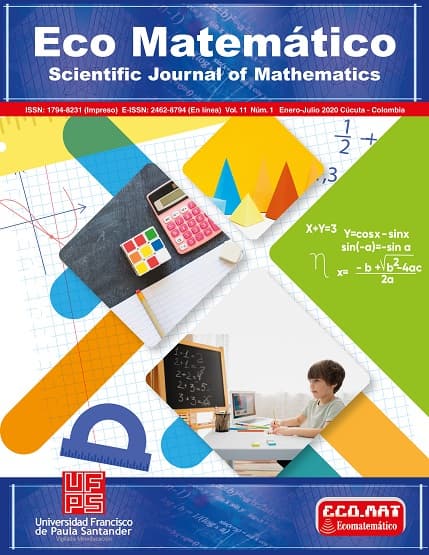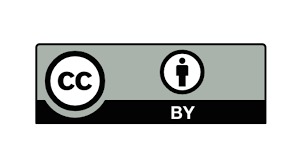Structural health monitoring of liquid filled above ground storage tank floors: a time-reversed approach to acoustic emission source location
Monitorización de la salud estructural de los suelos de tanques de almacenamiento sobre tierra llenos de líquido: Un enfoque de inversión temporal para la localización de fuentes de emisiones acústicas
Main Article Content
Acoustic Emission (AE) is a proven successful Non-Destructive Testing (NDT) method to assess the state of storage tank floors. Traditional AE source location in tanks floors is performed using only the wavefronts that have traveled directly from the source to the sensor (direct hit). The wavefronts captured after reflected from the tank walls are identified and discarded. This paper proposes a new AE source location algorithm in tanks that considers a combination of reflections and direct hits. The proposed algorithm is based on time-reversed acoustics and ray theory. The methodology uses the concept of time-reversed acoustics in which a wave detected at any location can be directed back to the source when re-created at the detection place. Therefore, the developed approach takes the time at which each wave arrives to the sensor and sends it back as if time had reversed. Ray theory is used in the methodology to account for the way in which the wavefront is reflected when encounters an obstacle such as the walls of the tank. Then, the point of intersection of all wavefronts is identified using an optimization algorithm. This point where all wavefronts intersect is considered the location of the source. The location algorithm considers the first path or direct hits from the source to the sensors combined with reflections obtained by wavefronts bouncing from the tank walls. The proposed location algorithm was validated using numerical data from 176ft diameter tank and experimentally using AE data from a tank 55ft diameter.
Downloads
Article Details
Aggelis, D. G., Barkoula, N. M., Matikas, T. E., and Paipetis, A. S. (2012). Acoustic structural health monitoring of composite materials: Damage identification and evaluation in cross ply laminates using acoustic emission and ultrasonics. Composites Science and Technology, 72(10), 1127-1133
Anastasi, R. F. (2011). Time Reversal Methods for Structural Health Monitoring of Metallic Structures Using Guided Waves, (No. ARL-TR-5716). ARMY RESEARCH LAB HAMPTON VA VEHICLE TECHNOLOGY DIRECTORATE
Albert, D. G., Liu, L., and Moran, M. L. (2005). Time reversal processing for source location in an urban environmenta), The Journal of the Acoustical Society of America, 118(2), 616-619
Bai, C. Y., Hu, G. Y., Zhang, Y. T., and Li, Z. S. (2014). Seismic wavefield propagation in 2D anisotropic media: Ray theory versus wave-equation simulation. Journal of Applied Geophysics, 104, 163-171
Chen, J., Su, Z., and Cheng, L. (2010). Identification of corrosion damage in submerged structures using fundamental anti-symmetric Lamb waves. Smart Materials and Structures, 19(1), 015004
Cole, P. T., and Gautrey, S. N. (2002). Development history of the Tankpac AE tank floor corrosion test. NDT. net, 7(09)
da Cruz, A. C., and Ribeiro, M. S. (2005). RobTank Inspec–in service robotized inspection tool for hazardous products storage tanks. Industrial Robot: An International Journal, 32(2), 157-162
Essl, G. (2006). Computation of wave fronts on a disk I: numerical experiments. Electronic Notes in Theoretical Computer Science, 161, 25-41
Fink, M. (1992). Time reversal of ultrasonic fields. I. Basic principles. Ultrasonics, Ferroelectrics and Frequency Control, IEEE Transactions on, 39(5), 555-566
Godinez-Azcuaga, V., Inman, D., Ziehl, P., Giurgiutiu, V., Nanni, A. (2011) Recent advances in the development of a self-powered wireless sensor network for structural health prognosis. In: Wu HF, editor. 1 ed. San Diego, California, USA: SPIE; p. 798325-7
Horn, M. (1996). Acoustic emission source location by reverse ray tracing. U.S. Patent No. 5,528,557. Washington, DC: U.S. Patent and Trademark Office
Nair, A. and C. S. Cai (2010). Acoustic emission monitoring of bridges: Review and case studies Engineering Structures 32(6): 1704-1714
Mazeika, L., Kazys, R., Raisutis, R., and Sliteris, R. (2011). Ultrasonic guided wave tomography for the inspection of the fuel tanks floor. International Journal of Materials and Product Technology, 41(1), 128-139
Momeni, S., Koduru, J. P., Gonzalez, M., Zárate, B., and Godinez, V. (2013, March). Online acoustic emission monitoring of combustion turbines for compressor stator vane crack detection. In SPIE Smart Structures and Materials+ Nondestructive Evaluation and Health Monitoring (pp. 86900B-86900B). International Society for Optics and Photonics
Parot, J. M. (2008). Localizing impulse sources in an open space by time reversal with very few transducers. Applied Acoustics, 69(4), 311-324
Rizzo, P., Han, J. G., and Ni, X. L. (2010). Structural health monitoring of immersed structures by means of guided ultrasonic waves. Journal of Intelligent Material Systems and Structures, 21(14), 1397-1407
Schempf, H., Chemel, B., and Everett, N. (1995). Neptune: above-ground storage tank inspection robot system. Robotics and Automation Magazine, IEEE, 2(2), 9-15
Shigeishi, M., S. Colombo, K. J. Broughton, H. Rutledge, A. J. Batchelor and M. C. Forde (2001). Acoustic emission to assess and monitor the integrity of bridges, Construction and Building Materials 15(1): 35-49
Scruby, C. (1987) An introduction to acoustic emission, Journal of Physics E: Scientific Instruments 20: 946-953
Serrano, P., Guillem, I., and Gómez, V. (2014). Ray Tracing Study of the Effectiveness of Acoustic Intervention in the Church of Santa Maria De La Valldigna Monastery. In Construction and Building Research (pp. 383-389). Springer Netherlands
Sohn, H., Park, H. W., Law, K. H., and Farrar, C. R. (2007). Damage detection in composite plates by using an enhanced time reversal method. Journal of Aerospace Engineering, 20(3), 141-151
Wald, I., Slusallek, P., Benthin, C., and Wagner, M. (2001, September). Interactive rendering with coherent ray tracing. In Computer graphics forum (Vol. 20, No. 3, pp. 153-165). Blackwell Publishers Ltd
Wang, C. H., Rose, J. T., and Chang, F. K. (2004). A synthetic time-reversal imaging method for structural health monitoring. Smart materials and structures, 13(2), 415
Xu, B., and Giurgiutiu, V. (2007). Single mode tuning effects on Lamb wave time reversal with piezoelectric wafer active sensors for structural health monitoring. Journal of Nondestructive Evaluation, 26(2-4), 123-134
Zárate, B. A., Caicedo, J. M., Yu, J., and Ziehl, P. (2012). Probabilistic prognosis of fatigue crack growth using acoustic emission data. Journal of Engineering Mechanics, 138(9), 1101-1111
Zárate, B. A., Pollock, A., Momeni, S., and Ley, O. (2015). Structural health monitoring of liquid-filled tanks: a Bayesian approach for location of acoustic emission sources. Smart Materials and Structures, 24(1), 015017.







